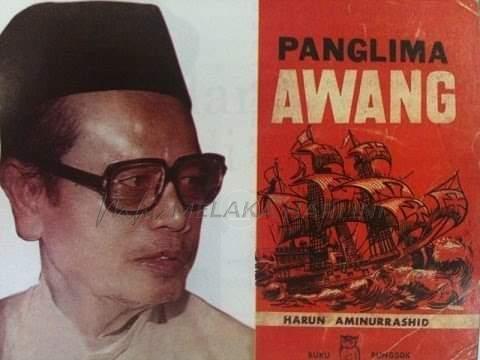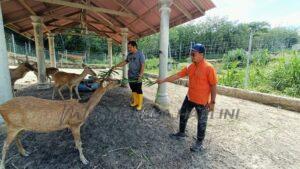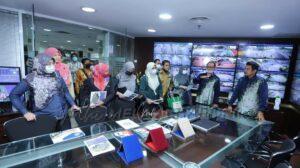
The World View of Harun Aminurrashid, Creator of Panglima Awang
HARUN Muhammad Amin was of the few influential lecturers at the Sultan Idris Training College (SITC) in Tanjong Malim. Harun was of course Harun Aminurrashid of Panglima Awang fame. Without Harun, we would probably not know of Panglima Awang, at least not in the present national imagination.
In the formative years of SITC throughout the 1920s, Harun took turns participating in occasional lectures in campus, getting students to think about nationalism and Malay identity.
Harun was not alone. Others like Abdul Hadi Haji Hasan and Buyong Adil were together creating the consciousness through writing the history of the Malays. The lectures were usually held on Saturday night in the college Hall.
In a subtle way, the lectures manifested an anti-colonial position. As Soda Naoki (2020) explains in Conceptualizing the Malay World, although SITC principal O.T. Dussek was sympathetic to increasing awareness of Malay identity, and the college appearing “to have effective control over the students, the boys still find ways to get around the rules and to become involved in volunteer activities which were neither organized nor sanctioned by the college.”
This allowed Harun to redefine and reconstitute concepts of Malayness and a strong sense of identity among the students.
Harun’s Panglima Awang was first published in 1958. The manuscript was completed on 11 September 1957, 11 days after Malaya declared her independence; and reprinted several times in October 1959, January and June 1961, November 1962, as well as January and November 1964. Panglima Awang has in a sense, set the scene for nation-building and nationhood, as well as national identity and a response to colonialism.
G.L. Koster’s (2009) “A Voyage to Freedom: Imagining the Portuguese in Harun Aminurrashid’s historical novel Panglima Awang” mentions Harun’s citing of two newspaper articles. One is the Straits Times Special Feature by G.E. in 1955 titled “First man to sail round the world is a Malay.” The other is in the Medan-based Waspada titled “Pengeliling dunia yang pertama adalah seorang Indonesia,” by Mohd. Said (1956). There is another earlier article read by Harun. This was “Anak Melayu yang Pertama Mengelilingi Dunia,” by Taha Suhaimi (1944) in the newspaper Fajar Asia.
From the intellectual ferment at SITC in the 1920s and 1930s, Harun undercut the European narrative. It portrayed Harun’s image of the Ferringgi as the problematic Other. He debunked one of the greatest tales of European exploration and navigation.
The novel was well received by the Malay reading public. Later it was made into a text for Literature for the Senior Cambridge (SC) and the Malayan Certificate of Examination (MCE). In Singapura, Panglima Awang later was used in the subject of Literature at its level 3 Malay secondary school. Harun realized his ambition in making Panglima Awang accessible through the novel, some called it historical fiction. The story symbolizes Harun’s anti-colonial and nationalist sentiments.
Harun wanted to portray the Malay character which has been erased by colonial history. He wanted to resurrect the narrative of Malay civilization. More than 60 years of the nation, we find Malay haters and bashers among Malaysian citizens. They vehemently deny the existence of peradaban Melayu. To them, the term and meaning of “civilization” is incompatible to the word “Malay.” Harun was committed to rebranding the Malay. The Malay image, from Harun’s perspective, needed to be corrected.
Harun was born on 8 August in Teluk Kurau Singapura as Harun bin Mukmin. According to Abdullah Hussain, (1982) in the biography Harun Aminurrashid: Pembangkit Semangat Kebangsaan (Harun Aminurrashid: Reviver of the Spirit of Nationalism), on the first day of school, his father’s name was changed from Mukmin to Muhammad Amin, because his teacher found it difficult to spell the name “Mukmin.”
Harun lived with his maternal grandmother upon the death of his father when he was three years-old. His grandmother was an avid reader of syairs (verse) and hikayats (classical narratives). She would read these to her grandson. From his early years, Harun would be familiar with such works are Syair Siti Zubaidah, Hikayat Amir Hamzah, Syair Isma Yatim, Syair Gul Bakawali and others.
In 1924, Harun was accepted to study at SITC in Tanjong Malim. There he was initially oriented to think of the Malay as a nation, encouraged to study, develop and promote Malay language, literature and history. One of his teachers was Abdul Hadi, skilled in the art narrating the Malay Sultanate of Melaka, the Portuguese invasion and their cruelty toward the Malays there. Harun, engrossed with Abdul Hadi’s story, developed the ambition to visit Portugal and see for himself face of the colonizers. He was curious as to the life and conditions in Portugal, and how managed they defeated the Malays.
To Harun, as retold by Abdullah “mengenal sejarah bererti mengenal akan diri sendiri” (knowing history means knowing oneself). Abdullah also cites Awang Had Salleh (1979) from the latter’s book Malay Secular Education and Teacher Training in British Malaya that Harun’s teacher, Abdul Hadi was exposed to the literature from Indonesia so much so that much of his writings were influenced by the notion of “Nusantara.” According to Awang Had, from a narrow provincial attitude, students were suddenly exposed to national consciousness covering a wider territory, sharing the Nusantara heroes (not without justification though) as their own.
This may have also led Harun, who was earlier attracted to the Indonesian struggle, to be a member of the Partai Nasional Indonesia (PNI). Datuk Mohamed Nor Ahmad, an SITC alumnus from Pulau Pinang, revealed that apart from Harun and himself, the other PNI member at Tanjong Malim was Ibrahim Yaacob.
Apart from teaching, Harun also made writing a tool for reform. His essays and short stories (cerpen) appeared in the major Bahasa Melayu newspapers at that time – Majlis, Warta Malaya and the Malay edition of Malaya tribune, under the pseudonym Harbma. Occasionally the editors would replace Harbma with Penulis Khas Tanjong Malim (Tanjong Malim Special Writer). All the same, readers know that these were penned by Harun.
#####
Langgani saluran Telegram kami untuk dapatkan berita-berita yang terkini.


